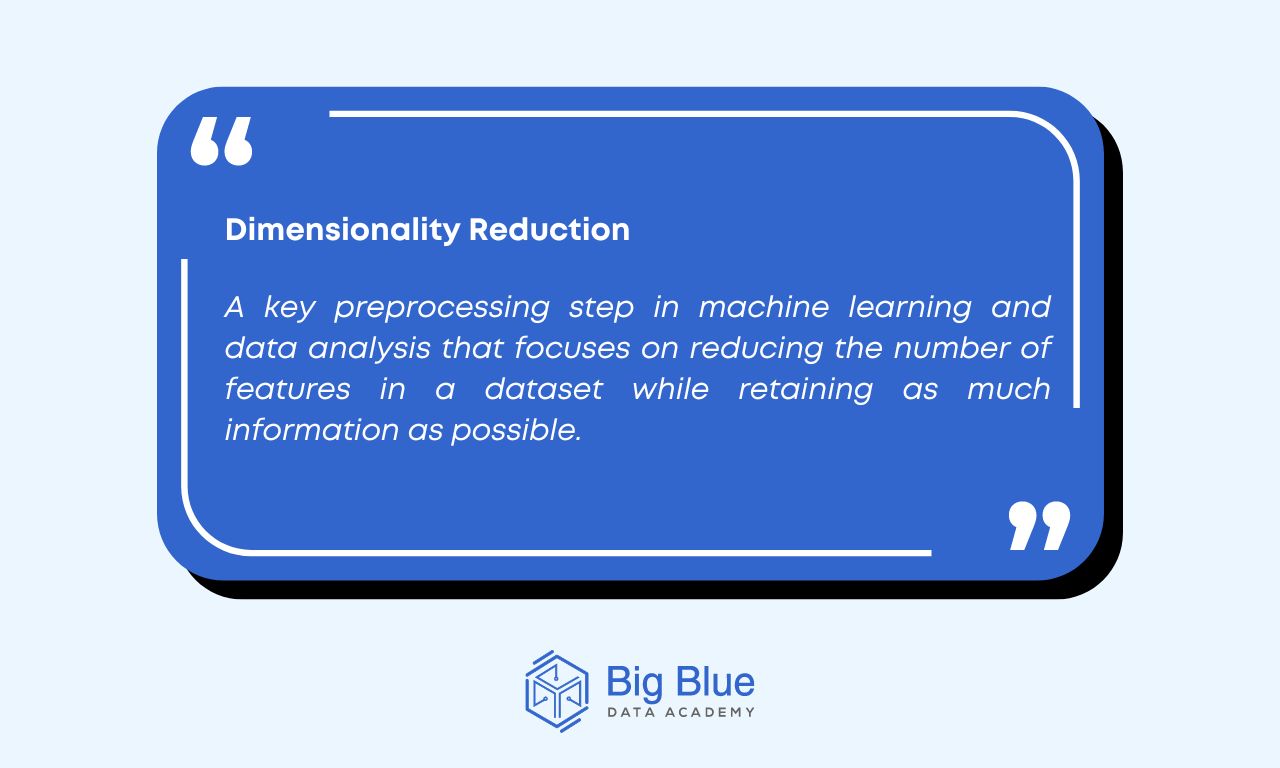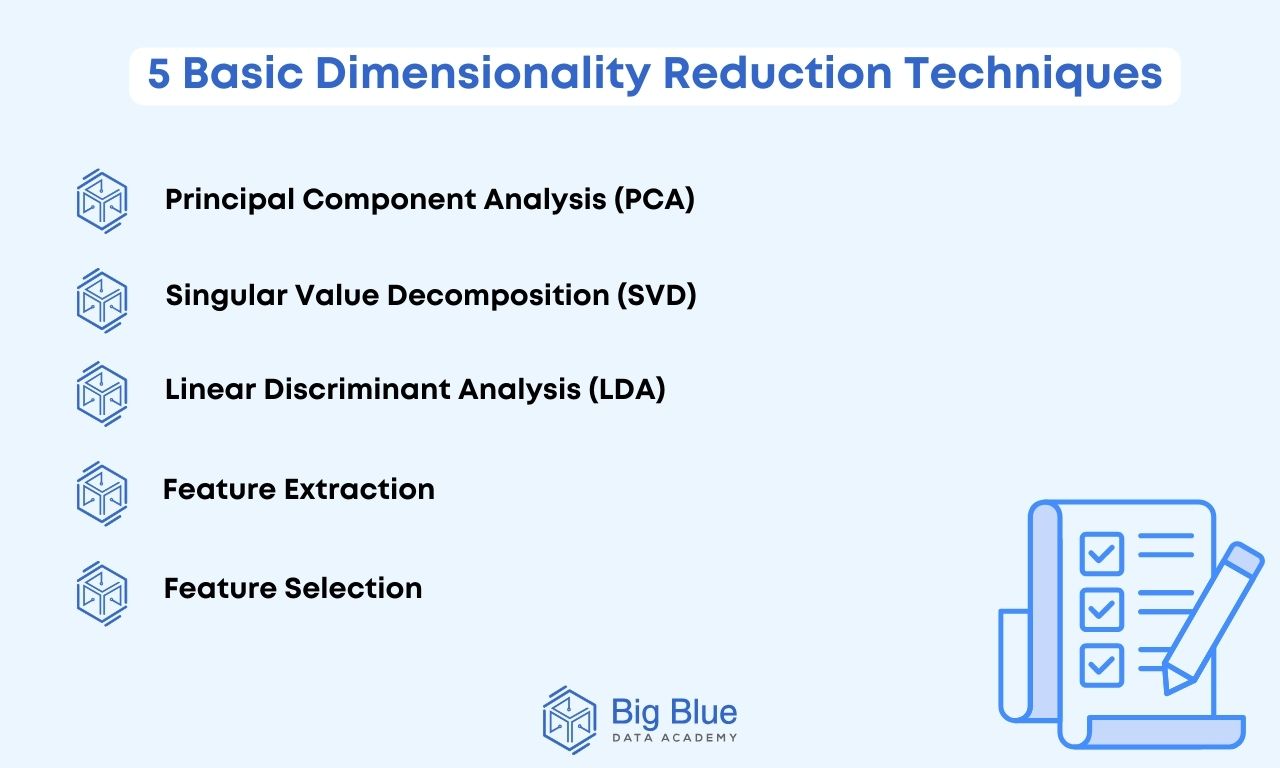Dimensionality Reduction: Definition & Techniques (2024)
In the process of data analysis and machine learning, data collected from various sources, before being used, is subject to significant pre-processing.
A key step of this preprocessing is dimensionality reduction, which we will talk about in detail in today's article.
In particular, in today's guide we will see:
- What is dimensionality reduction
- Why is it important
- What are the main methods used
Before we dive in, let's start with the basics.
What is Dimensionality Reduction and What is its Importance?
Dimensionality reduction is a key preprocessing step in machine learning and data analysis that focuses on reducing the number of features in a dataset while retaining as much information as possible.
A key problem that data scientists have to deal with in machine learning is high-dimensional data, which is essentially data with a large number of attributes or variables.

The greater the number of features of a machine learning model, the lower its performance.
After all, as we mentioned in our article on overfitting, complex high-dimensional data often leads to overfitting.
In other words, the model fits the training data too closely and does not generalize well to new data it has not seen before.
The dimensionality reduction provides the solution to this problem by reducing the complexity of the model and improving its generalization performance.
After exploring some basic things about dimensionality reduction and its importance, let's see what are the basic techniques used during this process.
Basic Dimensionality Reduction Techniques
Dimensionality reduction techniques are methods used to reduce the number of features in a data set while retaining as much information as possible.
The main goals of these techniques are to reduce the complexity of models, improve performance, and facilitate data visualization.
The 5 basic techniques for dimensionality reduction are as follows:

Technique #1: Principal Component Analysis (PCA)
Principal component analysis (PCA) is a method in statistics that uses an orthogonal transformation to transform observations of possibly correlated variables into a set of values of linearly uncorrelated variables, called principal components.
By using PCA, dimensionality reduction of the data is achieved while preserving its variance.
Technique #2: Singular Value Decomposition (SVD)
Singular value decomposition (SVD) is a technique used to simplify the values within an array by decomposing the array into its component parts to facilitate calculations with that array.
SVD is particularly useful when dealing with big data.
Technique #3: Linear Discriminant Analysis (LDA)
Furthermore, linear discriminant analysis (LDA) is a method used in pattern recognition and machine learning to find a linear combination of features that characterizes or separates two or more classes of objects.
Technique #4: Feature Extraction
Feature extraction involves the creation of new features by combining or transforming the original features.
The main purpose of this method is to create a feature set that captures the essence of the original data in a lower dimensional space.
Technique #5: Feature Selection
Feature selection is an important method that involves selecting a subset of initial features that are closely related to the problem a data scientist is asked to solve.
Through this process, an attempt is made to perform dimensionality reduction of the data set while preserving the most important features.
Overall, we could say that the choice of dimensionality reduction technique depends on the specific requirements of the data set and the problem that a data scientist is asked to face and solve.
Through this process, an attempt is made to perform dimensionality reduction of the data set while preserving the most important features.
Overall, we could say that the choice of dimensionality reduction technique depends on the specific requirements of the data set and the problem that a data scientist is asked to face and solve.
Ramping Up
So we analyzed what dimensionality reduction is, why it is important, as well as what are the main methods it uses.
The field of data science offers many career opportunities and good-paying jobs.
So if you're involved in this subject and want to enrich your knowledge, read more related articles on our blog!


.jpg)